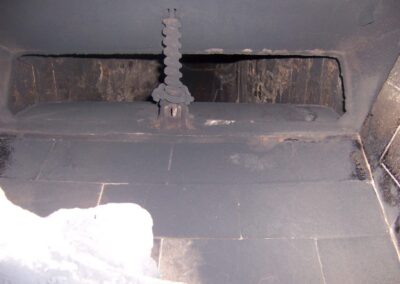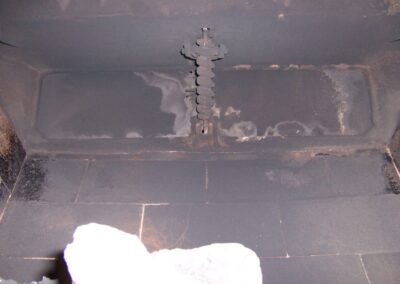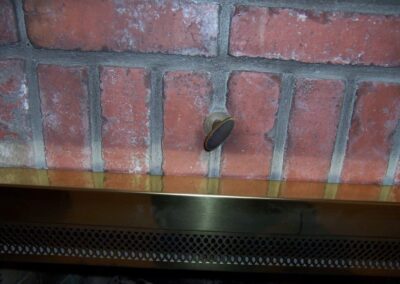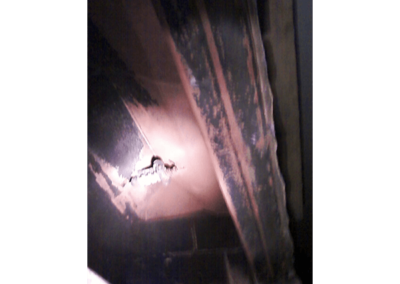Fireplace #40: Vestal Damper with Worm Gear Twist-Knob
These twist-handle worm gear actuated Vestal dampers are very common in masonry fireplaces of solid construction brick or stone. They come in a variety of sizes. The mechanical worm gear shaft of this damper has a tendency to jam or break. This locks up the damper door and makes access to the area above the damper difficult. These are their characteristics of the worm gear twist-handle Vestal dampers:
- They have a rectangular cast iron damper door that can be 24″ to 45″ long. (image 40-1)
- The door is opened and closed by a twist knob on the lintel face of the fireplace. (image 40-3)
- There is usually 5″ to 9″ of uninterrupted vertical space under the damper before the lintel opens to the room. (image 40-4)
Because of the propensity for this damper to jam closed. We will focus on products that install below the damper.
The Flueblocker covers the whole damper and worm gear
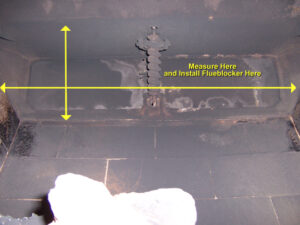 The Flueblocker is the best solution for this application, since the damper hardware below the damper door is not protruding down into the firebox. Here is how a Flueblocker is installed:
The Flueblocker is the best solution for this application, since the damper hardware below the damper door is not protruding down into the firebox. Here is how a Flueblocker is installed:
- Measure the wall to wall area left to right, and front to back below the damper (see yellow arrows). Then buy a Flueblocker that is a few inches bigger. If it is a really large area you may have to contact us for a custom size quote.
- Tuck the Flueblocker into the area you had measured. If it is over-sized, it may bow upward a bit from the pressure fit.
- Remove the Flueblocker before you have a fire.
What about the Chimney Balloon?
You can use a Chimney Balloon to plug the wall to wall area below a damper like this. There has to be at least 9″ of vertical space below the damper to fit the balloon in (image 40-4). Measure wall to wall left to right and front to back below the damper and buy a Chimney Balloon that is slightly larger than that. For example, if you measure 34×13 then buy a 36×15 Chimney Balloon. The Chimney Balloon will require a top-off of air each 6 to 12 months, and it is not quite as durable as non-inflatable plugs. So consider it a “Plan B” for this application.
